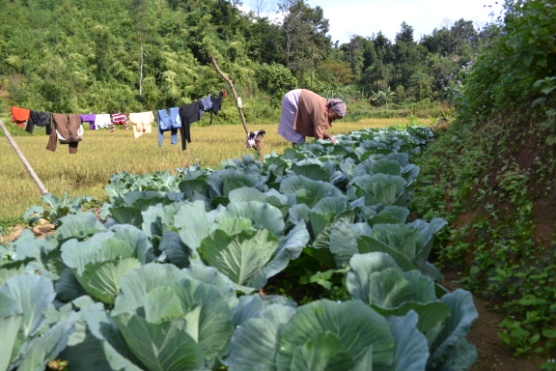
Women’s Self-Help Group Looks with Hope Toward the Future
In December of 2015, twelve women from a village in Northeast India attended a meeting where FRB’s local partner NEICORD was mobilizing Self-Help Groups as part of its India-Umsning program. The women liked the idea of receiving training designed to help farm families achieve maximum productivity on their land. The concept of Self-Help Groups also appealed to them since they often had difficulty making ends meet, despite the hard work their families did as day laborers.
These women formed a Self-Help Group of their own, and since then have participated in a number of workshops on a wide range of topics, from farming to group management, bookkeeping and leadership. The new agriculture techniques they’ve learned include Sloping Agriculture Land Technology (SALT), System of Rice Intensification (SRI), kitchen gardens, composting, water harvesting and livestock rearing. All 12 members have now planted kitchen gardens, and their families enjoy the nutritional benefits of a wide variety of vegetables. A group member declared that, “The kitchen garden has increased our nutrition security in the family.” Most have either begun or will soon begin using SALT and SRI practices as well.
The women all take part in monthly lessons organized by NEICORD on health, hygiene and nutrition. They also started raising pigs, using their savings to buy piglets and rear them as a group income-generating activity.
They’re saving small but significant sums of money every month. Says one, “Now we have access to loans through the internal-lending aspect of our group.” They even opened a group account at a local bank where they deposit their savings after every meeting. The members make loans to each other when requests are approved by the group. These women are looking forward to a better future. They understand that lasting change takes time, and they are willing to work hard and wait patiently for the best results for their families.
India-Umsning encompasses 12 communities, 190 households, and 950 individuals
